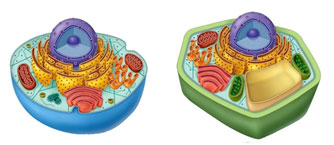
The modern cell theory states the following:
In this section, you will look more closely at the second and sixth statements of the cell theory.
You have learned the levels of organization in living things. You know that cells make up tissues, tissues make up organs, organs make up organ systems, and organ systems make up an organism.


You have also learned the functions of the various organ systems in the human body.
System |
Primary Function |
| Circulatory | transports nutrients and oxygen to the body |
| Respiratory | exchange of oxygen and carbon dioxide |
| Skeletal | provides structure and protection |
| Muscular | movement |
| Integumentary | protection |
| Digestive | breaks down food to provide energy and nutrients |
| Excretory | gets rid of body waste |
| Reproductive | produces offspring |
| Nervous | coordinates the body |
| Endocrine | regulates the body |
Without cells, none of the tasks in the table above could be carried out. Cells carry out the basic functions of organisms, such as extracting energy from food and waste removal.
A cell is the smallest unit that can carry on all of the processes of life.

The function of a cell is to:

Source: Balance Beam, Selma, Clker
The main function of an organism is to maintain homeostasis. All the components of an organism, from the cell organelles to the organ systems, interact to maintain homeostasis or a balanced internal environment.